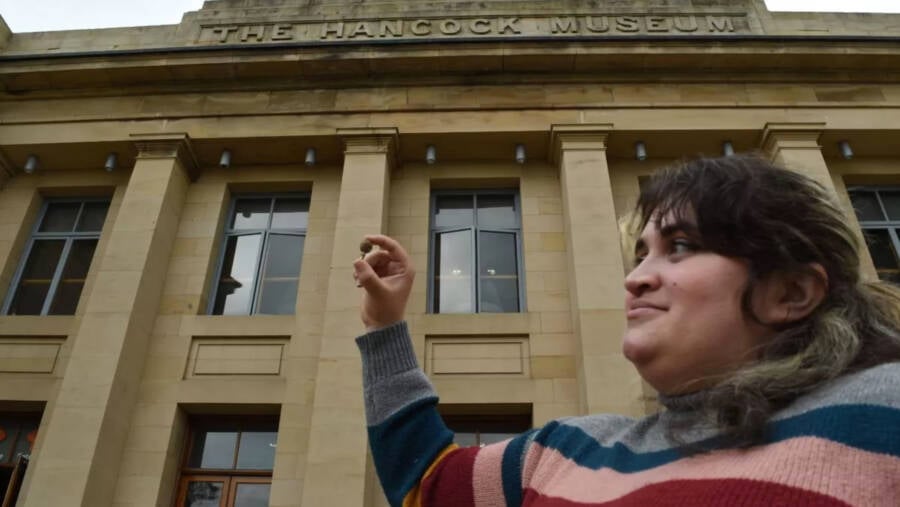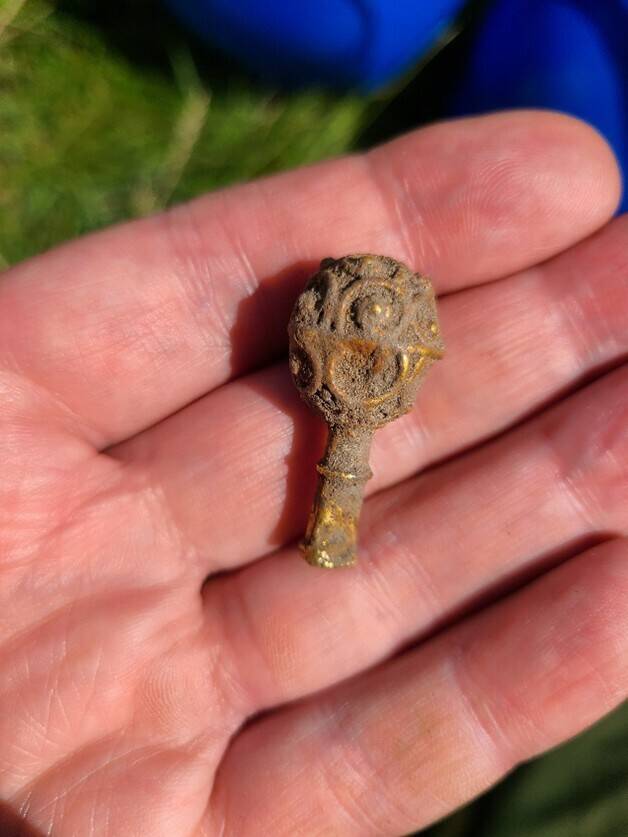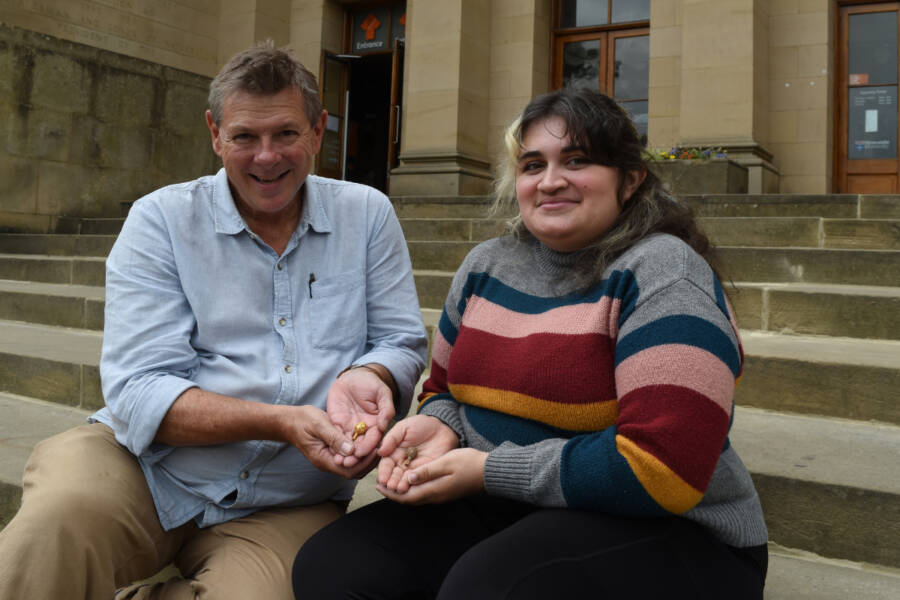Yara Souza joined a team that was excavating the ruins of a Roman road in Northumberland, England — and she made her first-ever discovery within just 90 minutes.

Newcastle UniversityArchaeology student Yara Souza found this 9th-century relic along the route of Dere Street, a major Roman road that ran between York and Edinburgh.
An archaeology student in England recently found a rare 9th-century relic made of gold when she was just 90 minutes into her very first excavation.
Newcastle University student Yara Souza was digging near the remains of Dere Street, a major Roman road that once ran through Northumberland, when she made this stunning discovery.
A similar object was uncovered in the area by a metal detectorist a few years ago, and while that one is believed to be a pin, the exact nature of Souza’s recent find remains shrouded in mystery.
Archaeology Student Yara Souza Makes A Discovery 90 Minutes Into Her Very First Dig

Newcastle UniversityThe newly-unearthed gold object is approximately 1,100 years old, and its exact purpose remains shrouded in mystery.
The chance to participate in a dig was a long time coming for Yara Souza. Originally from Orlando, Florida, she was unable to travel for last year’s excavations at the Birdoswald Roman fort near Hadrian’s Wall in northern England due to illness.
But surely this year’s discovery more than made up for last year’s disappointment. Within 90 minutes of starting the dig, Souza found a small, gold relic.
“I couldn’t believe I’d found something so quickly into my first ever excavation,” Souza said in a statement from Newcastle University. “It was actually quite overwhelming. After I’d had to miss Birdoswald last year, it was amazing to discover something that hasn’t been seen for more than a thousand years, I was really geeking out over it!”
The artifact is approximately four centimeters long and features a decorative swirl pattern. It has a handle, or finial, at one end and a bulb on the other. It’s believed to date back about 1,100 years.
This rare find is made of gold, a material reserved for high-status objects at the time. Archaeologists involved with the dig believe that the artifact may have had a religious or ceremonial purpose.
A similar looking object was discovered by a metal detectorist in 2021 in the same location in Northumberland. The object, a bit smaller than Souza’s find, was identified as a ball-headed pin from somewhere between 800 and 1000 C.E.
Uncovering The History Of Dere Street In Roman-Era Northumberland

Newcastle UniversityThe object that Yara Souza found is similar to another one uncovered at the same site in 2021.
Both gold relics were found along the ruins of Dere Street, a major Roman road that connected York and Edinburgh. The road continued to remain popular even after the fall of Rome, and is currently part of the A68 roadway.
In addition to linking York and Edinburgh, Dere Street also once connected two religious centers at Jedburgh and Hexham. This fact is what led experts to believe that the object Souza found may have served a religious or ceremonial purpose.
“We know that Dere Street continued to be a major thoroughfare long after the Romans,” said James Gerrard, professor of Roman archaeology at Newcastle University who led the excavation. “It is possible that this pair of objects may have been deliberately buried.”
Both the first artifact found by the detectorist and the artifact recently found by Souza will be further analyzed and eventually displayed at the Great North Museum: Hancock.
“This is an exciting find of exceptional quality,” said Gerrard. “I’m delighted for Yara that she has made this discovery at the beginning of her career as an archaeologist.”
After learning about this rare gold artifact uncovered by an archaeology student, read the story of the student who found a Viking-era stone head. Then, learn about how a student inspecting dinosaur fossils discovered a new species.





